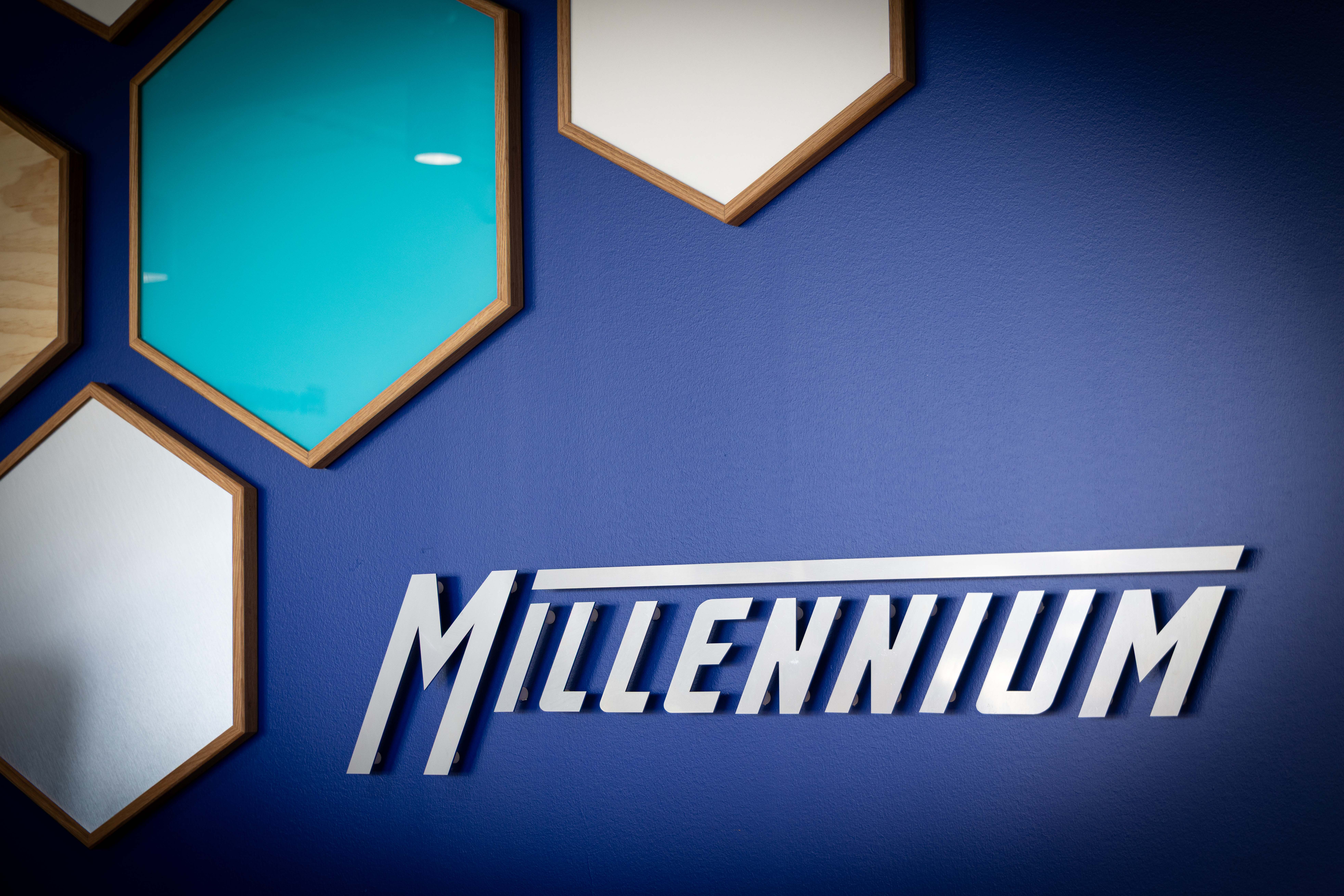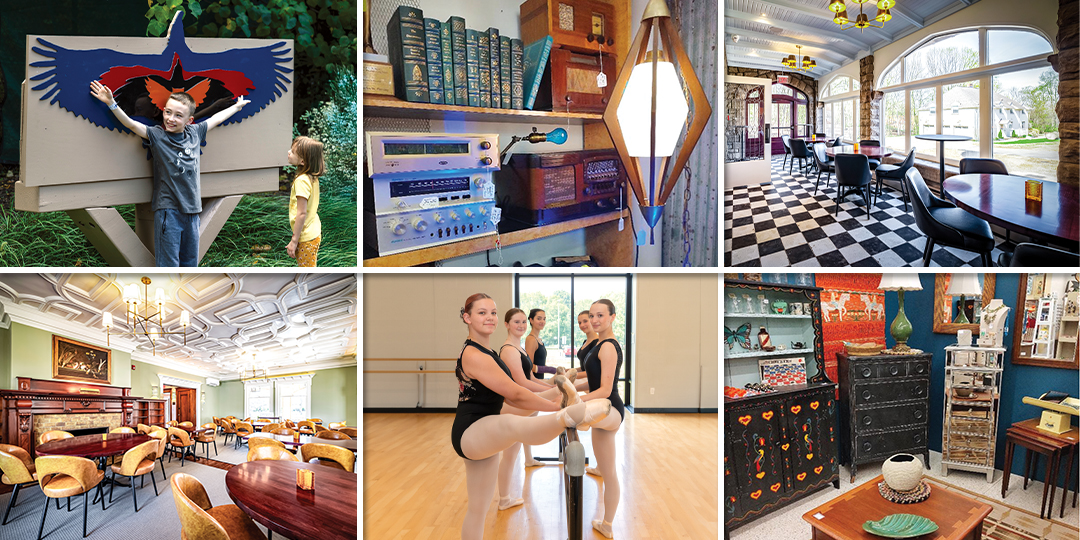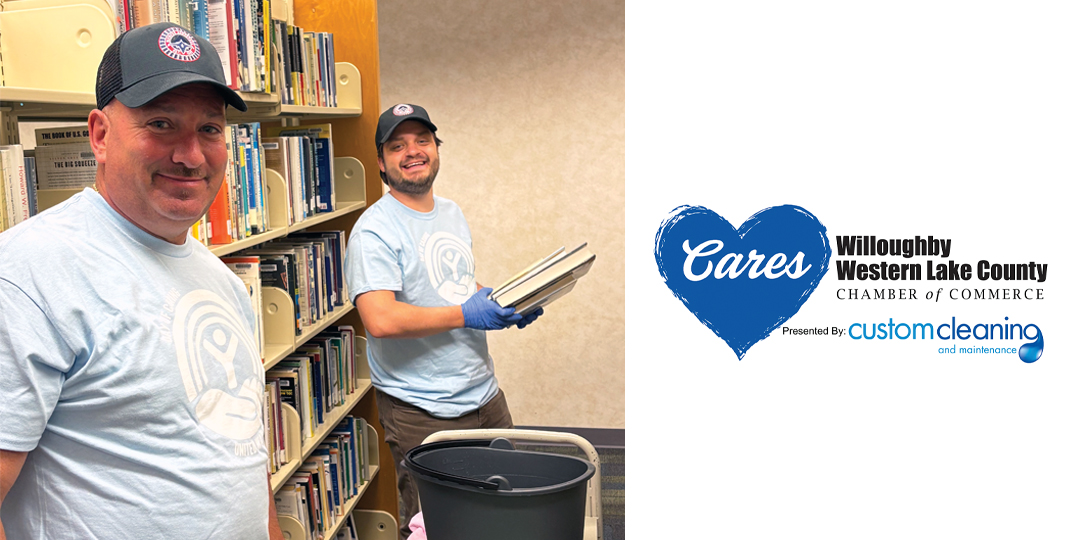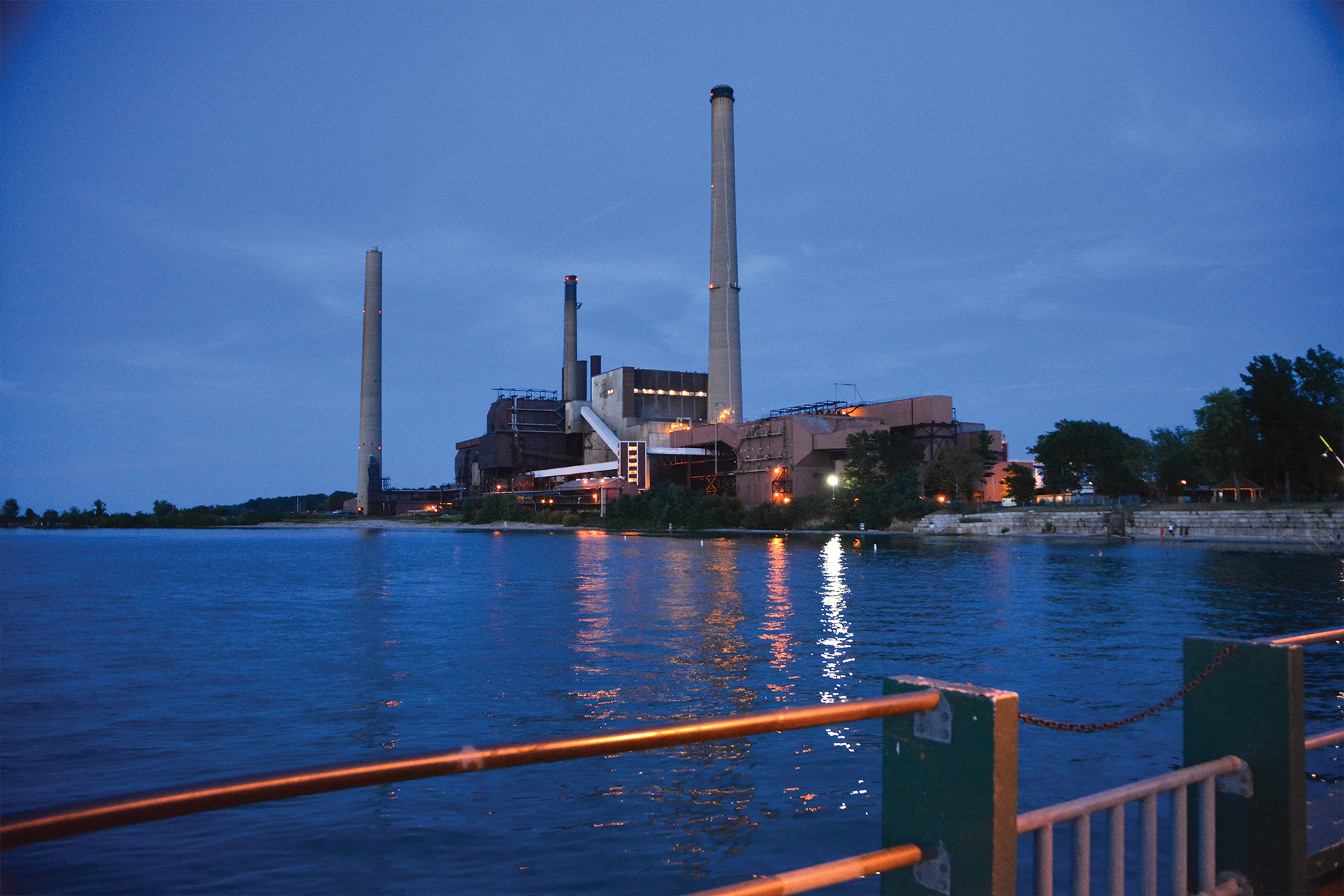University Hospitals' Drusinsky Sports Medicine Institute is Revolutionizing Sports Injury Treatment
Through comprehensive care, the new Drusinsky Sports Medicine Institute in Beachwood gets patients up and running again.
by Jill Sell — Partnership Content | Aug. 31, 2023 | 4:00 PM
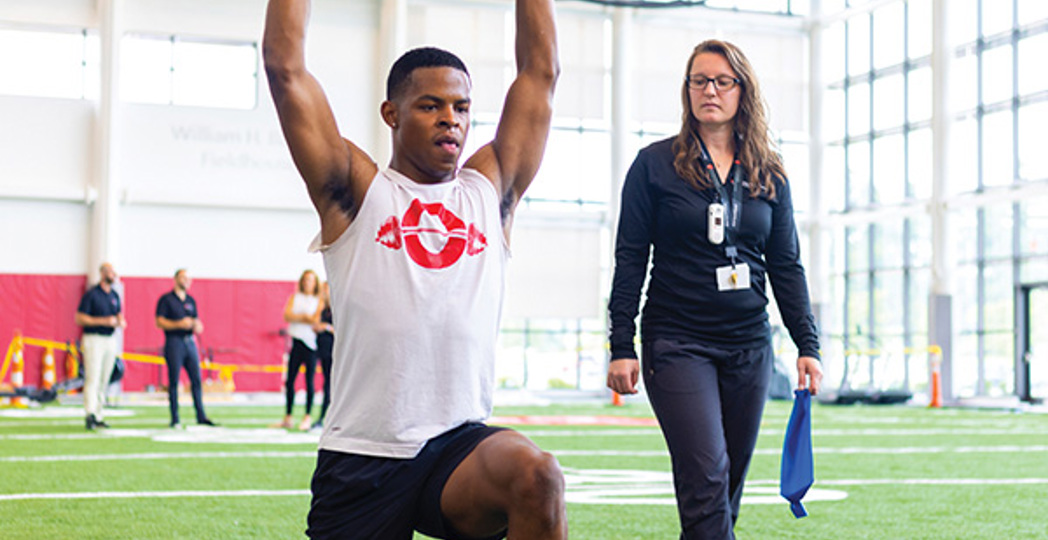
Really? This is a medical facility? Do I need tickets? Any good seats left? Do they sell souvenirs?
No one will really mistake the new Drusinsky Sports Medicine Institute for an athletic stadium. But the medical building is not at all intimidating, especially to those who enjoy sports and being physically active.
The institute is part of University Hospitals’ $236 million expansion of its Ahuja campus in Beachwood and opened this past June. The three-story, 76,200-square-foot sports medicine institute includes an impressive glass facade and a 40-yard fieldhouse with green artificial turf , complete with white yard lines.
“The goal was to make it look more like an arena than a critical care facility, to make people more comfortable,” says James Voos, MD, chair, UH Department of Orthopedic Surgery. “Patients come in and feel like they are walking into a fieldhouse to see a sports event rather than a medical event. It’s part of the psychological effect. A patient can think, ‘I hurt my knee playing tennis, but I want to get back out there. I am not sick.’ It’s designed to get you back.”
The institute treats athletes of all ages, but it’s not necessary to be a runner or a lacrosse player to receive care.
“If you are in your garden, have fallen and landed on your wrist and are concerned you might have fractured it, instead of going to the emergency room, you can walk into the injury clinic here and be seen right away by the right specialist,” says Voos. “That way, you can help save the emergency room for those patients who are having critical issues. And it’s more efficient for the patient who is having orthopedic issues.”
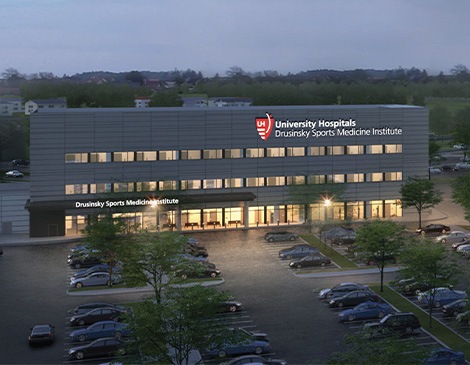
UH identifies the Drusinsky Sports Medicine Institute as “the most comprehensive, patient-centered facility of its kind in the United States.” The Orthopedic Injury Clinic, which welcomes walk-ins and offers state-of-the-art imaging and diagnostic services, is just one fraction of what the complex offers. Services also include on-site surgeries (including knee, shoulder, elbow and hip operations); conditioning and performance assessments (Am I ready for a marathon?); and rehab and performance training (use of a therapy pool and a variety of playing surfaces, etc.).
“We see everything from an ankle sprain to sore knees to complex knee ligament issues. The building is staffed with various orthopedic providers and athlete trainers all on-site, helping to provide you with the level of care you are looking for,” says Voos. “Each patient who walks in the door really feels their needs have been met.”
An athlete is a whole person. The sports medicine complex recognizes that and provides additional care under one roof that includes concussion and neurological care, nutrition, pain management, sports cardiology and sleep therapy.
“We tell our athletes that although they are seeing a sports medicine doctor, they have the entire health care system on their team,” Voos says. “That helps them get through any injury or issue they are going through.”
Trending
-
1
-
2
-
3
-
4
-
5






